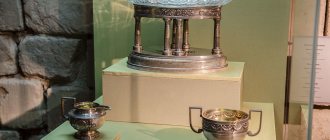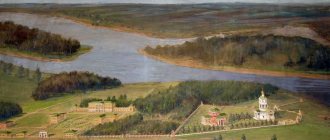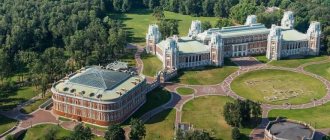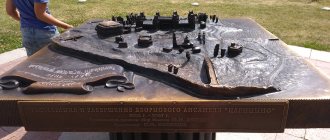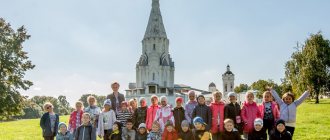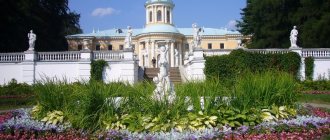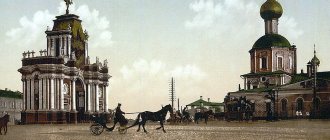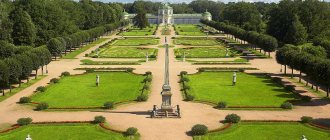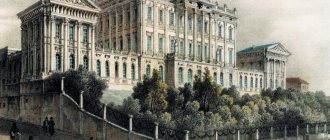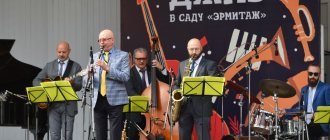Tsaritsyno is one of the most unusual and beautiful estates in Moscow. The history of Tsaritsino is bizarre and full of unexpected events, ups and downs. The mystery of Tsaritsyno has never been solved; it is connected with the name of the Russian Empress Catherine II.
It was by Catherine’s decree that a landscape park and an architectural complex called Tsaritsyno were created for her. Nowadays there is a modern and popular Tsaritsyno park, which has preserved traces of its former charm.
History of Tsaritsyno
Website: tsaritsyno-museum.ru
The history of Tsaritsyno began in 1755, when Catherine II arrived in Moscow. Driving to Kolomenskoye, she admired the beauty of the Black Dirt estate, owned by Prince Sergei Dmitrievich Kantemir. The Empress bought the estate and renamed it “Tsaritsyno”.
Vasily Bazhenov
To build a new residence, Catherine hires the court architect Vasily Bazhenov. She entrusts him with the creation of a landscape park and palace buildings in the Moorish style.
Bazhenov has been passionately building the royal estate for 10 years. According to his plan, the architectural buildings should look like a scattering of buildings that naturally fit into the landscape of the ancient park. The building materials used are red brick and white stone.
Nearby imperial palaces were built: for the empress and her son-heir Paul, and somewhat later a smaller palace for her grandchildren. They were the main palace building.
In addition to them, the Middle and Small Palace for Catherine, the Great Cavalry Building - the main building in the ensemble, for the Empress's courtiers, the Kitchen Building (Bread House), three cavalry buildings, the Chamber-Jungfer building, as well as pavilions and bridges, a landscape park is planned.
Big bridge over the ravine
The Big Bridge across the ravine is a ceremonial bridge with arched spans 80 meters long, an outstanding creation of Vasily Bazhenov that has come down to us.
In conditions of scarce funding, the architect has to take out loans on himself in order to continue construction. He has to constantly write letters to officials about the allocation of additional funds.
The entire project is agreed upon in writing with Catherine II, by 1785 it is almost ready, the only thing missing is the finishing of the buildings, since the customer cannot answer what to choose for this. Also, the Clock Tower and the Stable Building were not built, since consent was not given for this.
On June 5, 1985, Ekaterina arrives in Moscow and sees Bazhenov’s creation in reality for the first time. After spending a little time in the estate and seeing some of the premises, the empress leaves Tsaritsino. Her verdict was harsh: radical reconstruction of the main palaces is needed, since the ceilings are too low, the rooms are cramped, the staircases are narrow, and the halls are dark. Instead of triumph, an outstanding architect receives disgrace.
Catherine II's decision to rebuild completely finished buildings, previously approved by her, was unprecedented. The reason for this decision is still not clear and remains the main secret of the Tsaritsyn estate. Vasily Bazhenov was removed from further construction, the project was transferred to his student and assistant Matvey Kazakov. For Bazhenov, this, of course, became a personal drama. He was removed from the post of court architect.
Main attractions of the estate
Kazakov erected the Great Tsaritsyn Palace on the site of the dismantled buildings of Bazhenov, but only slightly deviated from the plan of the first architect. The palace building consists of two square wings. The right one was intended for the Empress’s chambers, the left one for Tsarevich Paul. Despite the fact that pseudo-Gothic features are noticeable in the external appearance of the palace, the architectural design of the main structure of the estate does not deviate from the canons of classicism. This is manifested in the balance of proportions, strict symmetry, monumentality and three-part division of the facades. The completions of the palace towers resemble the towers of the Moscow Kremlin.
Figured Bridge
Another large-scale Bazhenov building that has survived to this day is the Bread House, which is also known as the “Kitchen Building”.
This name appeared because of two emblems resembling a loaf of bread and a salt shaker.
Above them is an interesting monogram, which consists of the letters “X” and “C”. It is usually deciphered as “bread” and “salt”. The letter “S” looks like a kalach, “X” looks like crossed rulers, hinting that Bazhenov belonged to Freemasonry. While working on the Bread House, the Russian architect showed himself to be a real expert in culinary technologies. According to his design, the building had 8 kitchens. Today, the Bread House houses all the main museum exhibitions of the estate.
Big Bridge
There is also a shrine in Tsaritsino - a temple consecrated in honor of the iconographic image of the Mother of God “Life-Giving Source” (1722). It stands in the north of the palace square. It is interesting that the ancient temple is the only building that has survived from the first, Kantemirov estate, which the architect Bazhenov decided to include in his palace ensemble.
In the 1750-1760s, the church was reconstructed, adding a northern chapel in honor of the Great Martyr Dmitry of Thessaloniki. In the 80s of the 19th century, the temple was rebuilt again. Thanks to the skillful actions of the architect P.N. Avalanche, the shrine on the south side was replenished with a chapel, and its refectory was expanded. The bell tower of the temple has also undergone changes.
Gallery with arch
The Great Bridge, built across a deep ravine, has been preserved since the 18th century. Despite its utilitarian purpose, it is richly decorated. The pointed arches decorating its central part copy the portals of Gothic cathedrals. A zigzag pattern, like a “girdling” cornice, rosettes and lucarnes create a unique decoration. Bazhenov endowed the bridge with a large number of Masonic symbols.
The mystery of Tsaritsyno
Historians name several possible reasons why Catherine II rejected Bazhenov’s buildings; which of them is correct is not known for certain.
First reason
The connection between the architect Vasily Bazhenov and the Masonic lodge and its leader, journalist and public figure Nikolai Novikov. Catherine brutally dealt with Novikov, sending him to the Shlisselburg fortress for 15 years without trial, without finding a single crime behind him. By the way, this is another mystery of Catherine the Great, why the talented enlightener angered her so much. Novikov will be released from prison by Emperor Pavel after the death of his mother. As for Bazhenov, after searches, as a result of which no prohibited literature was found, he avoided arrest and continued his work as an architect.
The second reason
The Empress simply did not like the palaces. During the 10 years of construction, Catherine’s taste changed and Bazhenov’s “gentle gothic” was rejected by the empress, who gravitated towards classicism.
Third reason
Catherine lost interest in Tsaritsyno because she was carried away by the new construction project - the Pella palace and park complex, being built on the banks of the Neva (territory of the city of Otradnoye, Leningrad region). In 1784, she acquired the Ivanovskaya manor, where construction of a new favorite began with great enthusiasm. Pella suffered an even more tragic fate than Tsaritsyno - after the death of Catherine, by decree of Emperor Paul, all buildings were dismantled. Pella was Catherine's favorite vacation spot, for which she paid the price at the hands of her vengeful son.
Fourth reason
Catherine did not want to live in Moscow; she preferred the suburbs of St. Petersburg. That is why construction with a new architect lasts another 10 years, and is also financed from time to time. Interest in Tsaritsyno has been completely lost; construction cannot be completed.
Palace landscape park of the estate
After visiting the palace complex, you can take a walk through Tsaritsyn Park. Work on its breakdown began back in 1775. At that time, the park was planted with Siberian cedars and larches. Bazhenov was responsible for carrying out the work on developing the park area. The former Kantemirov estate was dominated by birch trees. Bazhenov did not cut down the Birch Alley of the estate, but made it the main axis of his ensemble.
Monument to architects Vasily Bazhen and Matvey Kazakov
In the manor park, burial mounds of the Vyatichi people have been preserved from the 11th-12th centuries.
The first research work on their study was carried out in the 19th century under the leadership of I.E. Zabelina. Additional archaeological excavations took place here in 1944. Experts found many unusual objects in the mounds, including unique tools. Later, these finds became the basis of the archaeological collection of the museum-reserve.
Attraction rating
Sights of Moscow
Matvey Kazakov
Grand Palace, modern version
Six months later, Kazakov presented a new design for the palace, which was approved. The Bazhenov palaces for the empress, the heir and his children were completely dismantled, as well as the chamber-Jungfer building. Matvey Kazakov is building a luxurious palace in the classicist style with Gothic elements: arched windows, pointed towers.
Grand Palace
The new palace is being built slowly due to insufficient funding. In 1793, the Empress ordered the third floor and the throne room to be removed in order to save money. The Great Cavalry Corps was dismantled for building materials.
After Catherine's death
In 1796, Catherine dies. By this time, the Grand Palace is not completely ready, the roof is covered with a temporary black roof, the premises are still unfinished. The new Emperor Pavel arrived in Tsaritsino in 1797, he did not like the estate, which was predictable, everything that related to his mother was hateful to him, and a decree was issued not to carry out any construction. All subsequent emperors showed no desire to complete the construction of the Great Palace and use it for its intended purpose.
At the beginning of the 19th century, Tsaritsino became a popular place for public walks. Some royal buildings are being converted into taverns and hotels. Romantic pavilions, gazebos, grottoes, and a ruin tower are being built according to the designs of Vasily Bazhenov’s student, architect Ivan Egotov. Tables and chairs are installed in the pavilions for the public to relax.
Gazebo "Temple of Ceres"
At the end of the 19th century, the buildings turned into dachas and lost their historical appearance: terraces and sheds were added to them. The holiday village of New Tsaritsyno appears, where many celebrities live.
After the revolution of 1917, the village of Lenino was created on the territory of Tsaritsyno. Some palace buildings house communal apartments, a club, a cultural center, and a museum. In 1960, Lenino became part of Moscow.
Large-scale restoration of buildings, except for the Grand Palace, began in the mid-1980s. In 2004, Tsaritsyno Park was transferred to the balance of the city of Moscow. In 2005, at the instigation of Mayor Yuri Luzhkov, a large-scale and rapid restoration of the Grand Palace and park area began, despite protests from restorers, art critics and architects. On September 2, 2007, on Moscow City Day, the grand opening of the renovated palace complex took place, which was attended by Putin.
The Tsaritsyno estate arose at the whim of Catherine II, but despite 20 years of construction and changes in projects, the empress did not want to live here. None of the imperial family ever disturbed the peace of the disgraced estate. Throughout its long history, Tsaritsino did not become a Moscow imperial residence, although it deserved it no less than Peterhof, Gatchina, Tsarskoe Selo, Pavlovsk or Oranienbaum.
Great Palace, ruins
For many years, Tsaritsino was shrouded in a romantic and mysterious aura due to its picturesque ruins and ancient neglected park. The huge ruin of the Grand Palace gradually disappeared into the landscape. After Luzhkov decided to restore order in Tsaritsino, regardless of the historical heritage, as he did more than once, the park became crowded and noisy. Now it is an ordinary modern amusement park, loved by the public. Exhibitions, concerts, light and music performances are held here, the magic of Tsaritsyn is lost forever.
Ponds of the reserve
“Tsaritsyno” - a museum-reserve, a photo of which we posted in our article, has two ponds - Upper and Nizhny Shipilovsky. They appeared on the territory of the estate by the middle of the 17th century, after the construction of dams on the Yazvenka, Gorodnya and Cherepishka rivers.
Mills were built on the dams. The ponds formed one harmonious cascade with the Borisov Pond, which was created during the time of Tsar Boris Godunov.
Today, Borisovsky and Tsaritsynsky ponds are considered the oldest and largest in terms of length and area in the modern capital.
The total area of the reservoirs exceeds 180 hectares.
